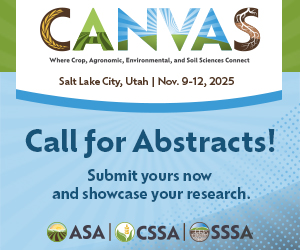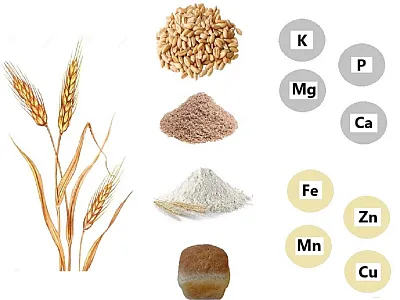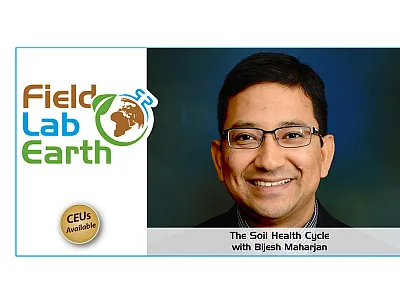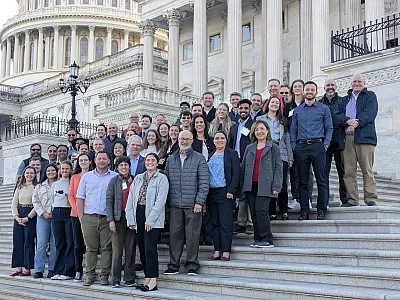Energizing, Motivating Lectureships on Tap in San Antonio

The Agronomic Science Foundation Lectureships at the 2024 International Annual Meeting will be sure to energize and motivate attendees! Check out the complete details at acsmeetings.org/speakers and be sure to register by October 2 to receive the early registration price!
ASA Plenary/E.T. & Vam York Distinguished ASA Lectureship
About the Speaker Kaiyu Guan
Kaiyu Guan is a Blue Waters Professor and the Founding Director of Agroecosystem Sustainability Center at the University of Illinois Urbana‐Champaign and Chief Scientist for the NASA Acres Program. His research group uses computational models, satellite data, field work, and artificial intelligence to address how climate and human practices affect crop productivity, water resource availability, and ecosystem functioning. Guan’s group aims to increase our society’s resilience and adaptability to maintain sustainability of ecosystem services, food security, and water resources.
About the Talk
Dr. Guan’s talk is titled, “SYMFONI: The ‘System‐of‐Systems’ Solution to Quantify Soil Carbon and GHG Outcomes for the U.S. Croplands.”
Agriculture contributes nearly a quarter of global greenhouse gas (GHG) emissions, motivating strong societal interest in adopting certain farming practices that have the potential to reduce GHG emissions or sequester carbon in soil. Guan’s group has developed the SYMFONI solution—the first‐of‐its‐kind “system‐of‐systems” solution to quantify field‐level agricultural carbon outcomes. In the past few years, Guan and colleagues have been extensively developing and applying the SYMFONI solution to major cropping systems in the U.S. Through these efforts, they have developed accurate and scalable quantification of soil carbon and GHG outcomes from the field to regional scales. The SYMFONI solution enables the explicit outcome quantification of various management practices, especially the climate‐smart practices, including cover cropping, smart fertilizer applications, conservation tillage, rotational grazing, improved tile drainage, etc. These works build a solid foundation to enable field‐level quantification of soil carbon change and GHG emission, thus paving a way to enable agriculture to be profitable, sustainable, and a solution to climate change.
CSSA Plenary/Betty Klepper Endowed Lectureship
About the SpeakerDaniel Stone
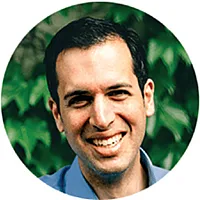
Daniel Stone is a writer on science, history, and adventure. He is a former senior editor for National Geographic and a former White House correspondent for Newsweek. His first book, The Food Explorer, was a national bestseller and selected as the American Horticulture Society’s book of the year. The Food Explorer is currently in development for a TV series. His book, Sinkable, released in 2022, is about shipwrecks, the deep sea, and the strange underworld of shipwreck obsession.
Stone is an occasional contributor to The Washington Post, Time magazine, and Smithsonian magazine, and has presented at the National Academy of Sciences. He is a Professor of Environmental Science and Policy at Johns Hopkins University where he teaches environmental communication, history, and storytelling.
About the Talk
Stone’s talk is titled, “Botanical Pioneers: Exploring the Legacies of Fairchild, Meyer, and Popenoe.”
Legendary explorers in the field of botany, these intrepid adventurers revolutionized American food through their daring expeditions, tireless dedication, and profound passion for plants. From Fairchild’s global expeditions to Meyer’s harrowing journeys through Asia and Popenoe’s transformative work in Central America, their stories epitomize the spirit of adventure, discovery, and scientific inquiry. Through captivating stories and stunning visuals, Daniel Stone will take audiences on a journey through time and across continents to celebrate these visionary plant collectors’ enduring legacy.
SSSA Plenary/Nyle C. Brady Frontiers of Soil Science Lectureship
About the SpeakerDoug Ming
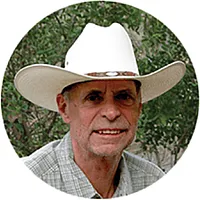
Doug Ming is an emeritus planetary (soil) scientist and former Chief Scientist for Exploration in the Astromaterials Research and Exploration Science Division at NASA Johnson Space Center. He earned his B.S. and M.S. degrees in Soil Science from Colorado State University and his Ph.D. from Texas A&M University. Ming is currently a science team member and a co‐investigator for the Mars Curiosity rover. He was a science team member on the Mars Spirit and Opportunity rover missions and a co‐investigator for the 2007 Mars Phoenix Scout mission.
Ming’s research interests include geochemistry, mineralogy, and aqueous alteration processes on Mars and Earth. He has published more than 250 peer‐reviewed journal articles and book chapters, including serving as the lead author of a paper in the journal Science that describes the first detection of the elements necessary for life in sedimentary rocks examined by the Curiosity rover on Mars. He was the recipient of the Jackson Soil Chemistry and Mineralogy Award.
About the Talk
Ming’s talk is titled, “Aqueous Alteration on Mars through the Eyes of Rovers.”
The occurrence of extensive valley networks and layered deposits of phyllosilicates and sulfates during the late Noachian/Hesperian periods (approximately 3–4 billion years ago) indicates a past Martian climate that could sustain liquid water at the surface. The planet’s climate drastically changed after these early “episodes” of liquid water to a drier and colder environment during the Amazonian period (past 3 billion years). “Boots on the ground” via rovers and landers have provided a wealth of mineralogical, geochemical, and morphological evidence for the interaction of water with basaltic materials at the surface. This lecture will take the audience along for a “ride” with the rovers as we discovery the evidence for liquid water and the implications for habitability and climate change. Spirit will show us evidence for pedogenic‐like processes in mature regolith materials in Gusev crater. Opportunity discovered vast deposits of sulfate‐rich basaltic sandstones that formed under acid‐sulfate aqueous alteration conditions at Meridian Plenum. And Curiosity will take us up‐section through geologic time in Gale crater from clay mineral‐rich lacustrine sediments to sulfate‐rich eolian, evaporite‐like deposits that span a major change of the planet’s climate from a warm/wet to cold/dry environment.
Other Lectureships | ||
|---|---|---|
| Lectureship | Speaker | Title |
| Francis E. Clark Distinguished Lectureship on Soil Biology | Serita Frey | Challenging Assumptions, Leveraging Mistakes, and Overcoming Blind Spots to Advance Science: Lessons from a Soil Ecologist’s Journey |
| Rattan Lal Climate Lectureship | Alan Franzluebbers | “Soil Carbon as a Metric of Influence to Integrate Science and Farming Communities” |
| Martin and Ruth Massengale Lectureship | Elizabeth Guertal | “New Discussions on the Value of Turfgrass in the Environment” |
| William H. Patrick, Jr. Memorial Lectureship | Jacob Berkowitz | “Chasing Carbon: Emerging Approaches to Assess C Resources Address Diverse Societal Goals” |
| Ron Phillips Plant Genetics Lectureship | Marilyn Warburton | “Unlocking Nature’s Vault: Innovative Tools for Plant Genebank Analysis” |
| Donald L. Sparks Distinguished Lectureship in Soil Chemistry | Scott Fendorf | “Into the Future: Climate Change Impacts on Soil Processes and Consequences for Humanity” |
| Calvin Sperling Memorial Biodiversity Lectureship | Stephanie Greene | “Crop Wild Relatives Native to the United States: Current Status to Conserve These Important Genetic Resources” |
| Leo M. Walsh Soil Fertility Distinguished Lectureship | Rob Mikkelsen | “Digging Deep: Unraveling Nutrient Management Myths in a Soil Science Career” |
| Sergei A. Wilde Distinguished Lectureship on Forest Soils | Daniel D. Richter | “Understanding Soil Change: Over Multimillennial, Centurial, and Decadal Time Scales” |
Text © . The authors. CC BY-NC-ND 4.0. Except where otherwise noted, images are subject to copyright. Any reuse without express permission from the copyright owner is prohibited.



